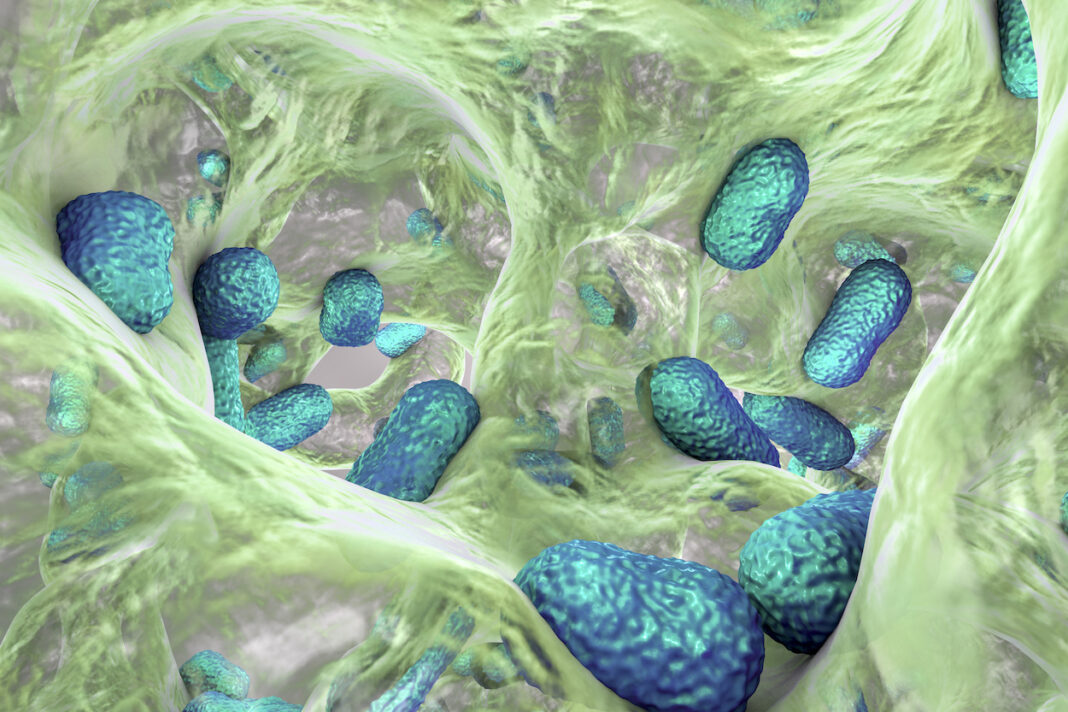Stanford and McMaster University researchers created an artificial intelligence (AI) model to design molecules that inhibit the growth of Acinetobacter baumannii, a common drug-resistant bacteria. They synthesized and validated six structurally novel molecules that demonstrated antibacterial activity against A. baumannii and other phylogenetically diverse bacterial pathogens. This study represents a significant step toward the practical application of generative AI approaches for antibiotic discovery and drug discovery in general.
The research article, “Generative AI for designing and validating easily synthesizable and structurally novel antibiotics,” was published in Nature Machine Intelligence.
Stopping ESKAPE
Among the most critical issues in contemporary medicine is the worldwide spread of factors contributing to antibiotic resistance. In 2019, drug-resistant infections were responsible for an estimated 4.95 million deaths. As new antibiotics are being developed slower than the spread of antimicrobial resistance determinants, this figure is expected to reach 10 million annually by 2050.
Six bacterial species are particularly dangerous and resistant to drugs, known as the ESKAPE pathogens. According to the World Health Organization, one of these pathogens, the gram-negative bacterium A. baumannii, is particularly burdensome in clinical settings and is considered the highest priority for new antibiotic development. A. baumannii is notoriously difficult to eradicate, and it can cause pneumonia, meningitis, and wound infections, all of which can be fatal. New antibiotics are desperately required to combat A. baumannii because current treatment options are inadequate.
Finding the right AI tools
AI methods have demonstrated the ability to identify promising drug candidates, including antibiotics. One type of AI method commonly leveraged in drug discovery is called a property prediction model, which is trained to estimate a molecule’s inherent physical and chemical properties based on information derived from its structural characteristics. Property prediction models have been used to predict growth inhibitory activity against Escherichia coli and the antibiotic-resistant Burkholderia cenocepacia. Despite these successes, property prediction models are limited to evaluating molecules one by one from enumerated chemical libraries, which prevents them from exploring truly vast chemical spaces in a reasonable time.
Alternatively, generative AI models do not analyze existing molecules but instead build new ones, allowing for the discovery of novel structural classes of molecules. This is particularly important for antibiotics, where structurally and functionally novel molecules are desirable to overcome existing resistance determinants. While generative AI methods have been proposed and shown to be promising in silico, very few studies have synthesized and experimentally tested any of the hypothetical molecules. Also, developing small-molecule antibiotics has not been a focus of any of these prior approaches.
SyntheMol
Kyle Swanson, a PhD student at Stanford and Gary Liu, a PhD student at McMaster, co-led the development of SyntheMol, which uses property prediction models and generative AI to create new antibiotics. Essentially, SyntheMol employs property prediction models based on real-world data to assess the vast chemical space that generative AI models can mine for potential molecules. The researchers trained a property prediction model to predict antibacterial activity. They curated a training set of ~13,000 molecules against growth inhibition assays to determine their bioactivity against A. baumannii. The property prediction model guided the exploration of nearly 30 billion molecules synthesized using generative AI.
Among the SyntheMol compounds, the researchers synthesized and tested 58 structurally novel and diverse compounds. They discovered six structurally novel molecules with activity against A. baumannii. When combined with an outer membrane perturbing agent, such as SPR 741 or colistin, all six molecules have broad-spectrum activity against the diverse gram-negative species A. baumannii, E. coli, and K. pneumoniae, with one molecule, Enamine 40, also active against P. aeruginosa. As single agents, these molecules inhibit the growth of the gram-positive bacterium methicillin-resistant S. aureus and a lipopolysaccharide-deficient and colistin-resistant gram-negative isolate of A. baumannii (ATCC 19606R).
One significant disadvantage of SyntheMol was that it was not programmed to produce molecules with high aqueous solubility. Only two of the six molecules could be tested for toxicity in mouse models due to the other four antibacterial molecules’ insufficient aqueous solubility. While more research is needed to convert these generated molecules into viable antibiotic candidates and to improve generative AI methods for synthesizable molecule design, this work represents a significant step toward the practical application of generative AI approaches for antibiotic discovery and drug discovery in general.



